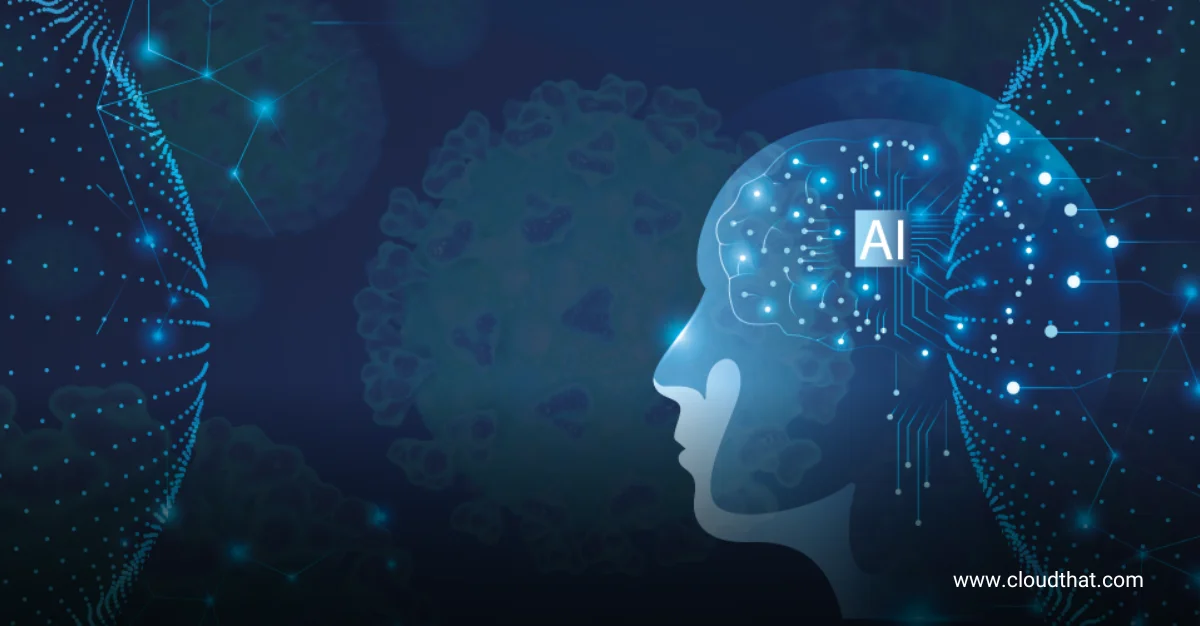|
Voiced by Amazon Polly |
Overview
Generative AI models have gained immense popularity for their ability to create realistic and novel content. In this guide, we will explore how to build your generative AI models using Python, a versatile programming language with a rich ecosystem of libraries. We will cover the basic use cases and conclude with insights into the future of generative AI.
Pioneers in Cloud Consulting & Migration Services
- Reduced infrastructural costs
- Accelerated application deployment
Introduction
Key Concepts:
- Generative Adversarial Networks (GANs): GANs consist of a generator and a discriminator working in tandem, creating realistic data and evaluating its authenticity.
- Variational Autoencoders (VAEs): VAEs learn a probabilistic mapping between input data and a latent space, allowing for diverse output generation.
Steps to Build Generative AI Models with Python
Creating generative AI models with Python involves a structured process encompassing data preparation, model selection, training, and evaluation.
- Data Preparation
- The foundation of any generative AI model lies in its training data. The quality and quantity of data significantly impact the model’s ability to learn and generate meaningful output.
- Data Collection: Gather a relevant and comprehensive dataset representing the data type you want your model to generate. For instance, if you’re building a text generator, you’ll need a large corpus of text documents.
- Data Preprocessing: Clean and prepare the data for training. This may involve removing irrelevant or noisy data, tokenizing the data into smaller units (e.g., words or sentences), and normalizing the data (e.g., converting text to lowercase).
- Model Selection and Implementation
- Choosing a Generative Model Architecture: Select an appropriate generative AI model architecture based on your task and data type. Common choices include Variational Autoencoders (VAEs), Generative Adversarial Networks (GANs), and Recurrent Neural Networks (RNNs) with attention mechanisms.
- Model Implementation Using Python Libraries: Utilize Python libraries like TensorFlow or PyTorch to implement the chosen model architecture. This involves defining the model’s layers, activation functions, loss function, and optimizer.
- Model Training and Optimization
- Training the Generative Model: Divide the dataset into training and validation sets. Train the model using the training data, optimizing its parameters to minimize the loss function. Monitor the model’s performance on the validation set to prevent overfitting.
- Hyperparameter Tuning: Refine the model’s hyperparameters (e.g., learning rate, batch size, optimizer settings) to enhance its performance and generalization ability. Employ techniques like grid search or random search to explore different hyperparameter combinations.
- Model Evaluation and Generation
- Evaluating Model Performance: Assess the trained model’s performance using qualitative and quantitative metrics. Qualitative metrics involve evaluating the generated output’s fluency, coherence, and similarity to the original data. Quantitative metrics can include perplexity, BLEU score, or FID score.
- Generating New Data: Unleash the power of the trained model to generate new data samples. Provide the model with a starting prompt or seed, and the model should generate novel data that adheres to the patterns and structures learned from the training data.
Use Cases of Generative AI Models
The applications of generative AI models span a wide spectrum, revolutionizing various industries and domains.
- Content Creation: Generate creative text formats like poems, code, scripts, musical pieces, emails, and letters.
- Data Augmentation: Expand existing datasets by synthetically generating new data samples, enhancing model training and performance.
- Image Generation and Manipulation: Produce realistic images, modify existing images, and create artistic variations.
- Drug Discovery and Development: Accelerate the drug discovery process by identifying potential drug candidates and predicting their properties.
- Personalization and Recommendation Systems: Enhance user experiences by generating personalized content recommendations and tailoring products or services to individual preferences.
Conclusion
Generative AI models are poised to transform various aspects of our lives, from how we consume media to how we conduct scientific research. As the field continues to evolve, we can expect even more innovative applications and advancements in this rapidly growing area. With its adaptability and versatility, Python will remain at the forefront of this revolution, empowering developers and researchers to push the boundaries of generative AI. The applications are diverse and continually expanding, from generating art to aiding in drug discovery. As you embark on your journey into generative AI, stay curious, experiment, and contribute to the ever-evolving landscape of artificial intelligence.
Drop a query if you have any questions regarding Generative AI models and we will get back to you quickly.
Making IT Networks Enterprise-ready – Cloud Management Services
- Accelerated cloud migration
- End-to-end view of the cloud environment
About CloudThat
CloudThat is an award-winning company and the first in India to offer cloud training and consulting services worldwide. As a Microsoft Solutions Partner, AWS Advanced Tier Training Partner, and Google Cloud Platform Partner, CloudThat has empowered over 850,000 professionals through 600+ cloud certifications winning global recognition for its training excellence including 20 MCT Trainers in Microsoft’s Global Top 100 and an impressive 12 awards in the last 8 years. CloudThat specializes in Cloud Migration, Data Platforms, DevOps, IoT, and cutting-edge technologies like Gen AI & AI/ML. It has delivered over 500 consulting projects for 250+ organizations in 30+ countries as it continues to empower professionals and enterprises to thrive in the digital-first world.
FAQs
1. Do I need a GPU to train generative models?
ANS: – While it’s possible to train on a CPU, a GPU, or even better, specialized hardware like TPU, it significantly speeds up the training process.
2. What's the difference between GANs and VAEs?
ANS: – GANs focus on creating realistic data, while VAEs emphasize learning a probabilistic mapping for generating diverse outputs.

WRITTEN BY Neetika Gupta
Neetika Gupta works as a Subject Matter Expert at CloudThat with experience deploying multiple data science projects across various cloud platforms. She has successfully delivered end-to-end AI applications tailored to business requirements on cloud frameworks such as AWS, Azure, and GCP. Neetika also specializes in deploying scalable applications using CI/CD pipelines.


 Login
Login


 December 4, 2023
December 4, 2023 PREV
PREV










Comments